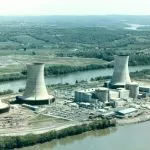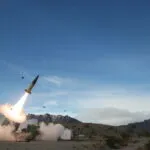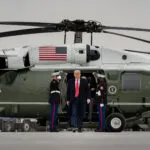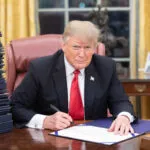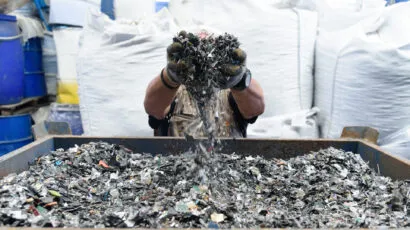The life and legacy of Moscow’s science center
By Glenn E. Schweitzer | November 13, 2012
“The Russian Government informs you of its intention to terminate the provisional application of the agreement on the International Science and Technology Center and withdraw from the associated protocol.” So read a diplomatic note to the United States, the European Union, Japan, and other interested parties in July 2011.
The news came as no surprise. In 2010 President Dmitry Medvedev had announced Russia’s intention to withdraw from the ISTC. Four years earlier, Russian government spokesmen had begun to emphasize that the process of redirecting underemployed nuclear, chemical, and biological weapons scientists into civilian endeavors — the primary responsibility of the center — had been completed.
Russian officials have repeatedly underscored that the ISTC has successfully accomplished its mission. The country no longer needs foreign-assistance programs that penetrate the country’s national security establishment. Russia has recovered and can take care of its own security problems, the Russian officials say.
Moscow’s withdrawal signals the end of the first phase of an amazing experiment involving 39 countries and international contributions of more than $1 billion. It has played a central role in limiting the access of malcontents and foreign agents to potentially dangerous know-how that abounds throughout Russia.
An era of euphoria. When I arrived in Moscow to become the first executive director of the ISTC in 1992, once-secret research and development organizations were beginning to open their doors to foreign visitors, who indicated that they might finance advanced technology activities with peaceful purposes. Initially the Russian government tried to orchestrate the outreach of a handful of tightly controlled Russian institutions. But soon scores of other institutes and enterprises joined in the hunt for new revenue from abroad.
It took more than two years for authorities in Washington, Brussels, Moscow, and Tokyo to develop and sign the ISTC agreement that addresses containment of expertise related to weapons of mass destruction in Russia and several other former Soviet republics. And then the newly constituted Duma (the Russian parliament) was not prepared to ratify the agreement. However, Russian officials developed a diplomatic approach for the ISTC to be established on a temporary basis without ratification by the Duma. The center has since operated on an interim basis for 18 years, confirming the adage — widely used in Russia — that nothing is more permanent than that which is temporary.
During the first few years of the ISTC’s operation, enthusiasm for finding new mechanisms to halt the leakage of defense secrets was at a high pitch. The budget contributions of the United States and the European Union to the ISTC were never in question. The number of Russian institutions waiting in line for consideration of their research project proposals grew from a few dozen to several hundred. Quickly the center became the flagship of international efforts to deal with proliferation and misuse of weapons expertise.
The center soon expanded its core program, which supported research projects in Russia and other newly independent states. Activities included the commercialization of new technologies developed in Russia, enlistment of international companies to sponsor and finance their own research projects through the good offices of the center, training programs in research management for local specialists, and the establishment of public-private partnerships to address issues ranging from manned spaceflight to multidrug-resistant tuberculosis.
By 2001 the annual budget had grown to more than $70 million. The Russian scientific community had found a sympathetic patron. Laboratory scientists became excited not only about new financial resources but also about the upsurge in interest from hundreds of international colleagues who were waiting to receive the results of their research. The center established links with key international organizations such as the European Organization for Nuclear Research (CERN), the International Atomic Energy Agency, and the World Health Organization — providing financing for research on high-energy physics, seismic disturbances, contagious diseases, and other important themes.
Most Russian scientists were aware that the country was still a long way from political stability. They witnessed a shadow economy that was benefiting a handful of rich Russians at the expense of others. But thousands of them seemed confident that the ISTC would continue to help them avoid the depths of poverty.
By 2003 the international contributions for projects began to decline. A few key Russian officials started to question the need for the ISTC. Still, the early 2000s can best be described as a time of euphoria at the center. The telephones rang constantly. The governing board members regularly basked in their successes. And many Russian scientists made contacts beyond the confines of their own laboratories.
Russia’s withdrawal. The ISTC was destined to be but a temporary fix. At the outset, I predicted a 10-year life for the center. I clearly misjudged the extent of the economic crisis and the enormity of Soviet military efforts. In time, I joined many others from abroad in urging the center to stay the course. It was easier to continue with well-functioning approaches than to recognize that the dramatic political and economic changes sweeping Russia required new thinking.
By 2006, key Russian government officials had begun to lose interest in the ISTC. Their own programs needed attention, and the ISTC had become a distraction. Some even referred to the center as a “competitor.”
Also, western officials had become increasingly concerned about security issues in the countries of Asia and the Middle East. Their focus on Russia as the key partner declined. They would continue to support the ISTC, provided that it continued on its current course with very attractive tax and customs privileges, and that Russia provided more of the funding required for specific projects.
Over the years, the contributions of the ISTC to the advancement of science and to the economic and social well-being of Russia seemed impressive to all who would listen. The ISTC Secretariat heralded a number of achievements in its publications and briefings, including:
- Airborne lasers for detecting pipeline leaks
- New high-molecular-weight compounds for long-term immobilization of soils contaminated with radioactive particles
- Artificial neural networks for stereo displays of financial data
- Assessment of marine contamination from radioactive waste disposal
- A plasma reactor for neutralizing pesticides and herbicides
- Live oral vaccines to prevent measles
These achievements, however, did not persuade skeptics that the center remained valuable. In particular, doubters repeatedly criticized the ISTC’s lack of impact on the commercialization of research results. Though they acknowledged that the center had been a successful venture overall, they argued that the environment had changed, with new sources of funding available for Russian scientists from activities involving other countries — such as China, Brazil, and India — as well as from the Russian ministries.
Political, security, and budget concerns weighed more heavily than scientific interests in Russia’s decision to withdraw, but probably the most decisive factor was the lack of a champion within the Russian government who would take responsibility for overseeing the activities of the center. Its patron, Rosatom (originally Minatom), had become preoccupied with new commercial opportunities at home and abroad. Government leadership simply did not want to be bothered with the far less profitable ISTC, which had become somewhat of a distraction by being so deeply involved in the security infrastructure of the country.
Lessons learned and the way forward. The ISTC has truly made a difference for security and science in Russia. More than 30,000 former weapons scientists and thousands of Russian civilians with dual-use skills have participated in ISTC-supported activities. The proliferation threat has been significantly reduced, and the impacts of ISTC activities have demonstrated time and again that the prophecy of Russian icon Anton Chekhov is spot on: “There is no national science, just as there is no national multiplication table; what is national is no longer science.”
Some concepts pioneered at the ISTC have been adopted by other international organizations, and also by national governments. The Science and Technology Center in Ukraine is patterned to a large extent after the ISTC. International programs of the European Union and Canada in Central Asia build on experiences in Russia. And many alumni of the ISTC, including myself, are engaged in related activities in other countries.
Although many of the once-isolated laboratories in Russia have become important nodes in global networks of scientific peers, these connections need continued nurturing. In response to this concern, a variety of follow-on mechanisms have been proposed. For example, an ISTC 2.0 could simply emphasize science cooperation in the broadest sense, contributing indirectly to nonproliferation.
The establishment of robust Russian educational and research programs devoted to the promotion of responsible science can be of special importance. Governments everywhere should give greater attention to increasingly serious dual-use dilemmas, which arise when technologies developed for the benefit of humanity can also be misused — with dangerous results. The ISTC has recognized the significance of this dilemma and has provided seed funding to a Russian university to develop a pilot education-oriented program. Now the Russian government, with encouragement from its ISTC partners, should step forward and make a major commitment to becoming a leader in this field, building on the center’s legacy and other relevant experiences.
Editor’s note: This article is adapted from Containing Russia’s Nuclear Firebirds: Harmony and Change at the International Science and Technology Center. Used by arrangement with the author. All rights reserved.
Together, we make the world safer.
The Bulletin elevates expert voices above the noise. But as an independent nonprofit organization, our operations depend on the support of readers like you. Help us continue to deliver quality journalism that holds leaders accountable. Your support of our work at any level is important. In return, we promise our coverage will be understandable, influential, vigilant, solution-oriented, and fair-minded. Together we can make a difference.
Topics: Opinion



